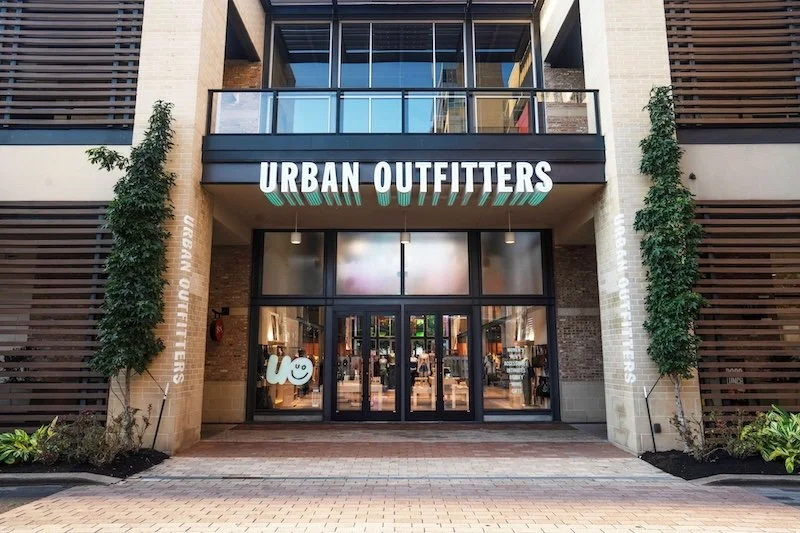Check out these case studies of successful omnichannel implementation in fashion retail
Omnichannel retailing is more than just a buzzword; it represents a fundamental shift in consumer expectations. This article will explore how the fashion retail sector has embraced these changes by adopting technologies that connect the online and offline worlds, personalise interactions, and streamline the shopping experience.
The fashion retail industry has undergone significant changes in recent years, driven by technological advancements and changing consumer behavior. The emergence of omnichannel retail strategies has changed the way brands engage with their customers across multiple touchpoints.
Unlike traditional single-channel approaches, an omnichannel approach aims to provide a seamless and consistent shopping experience, whether a customer is browsing online, visiting a physical store, or interacting through mobile apps and social media. Together with the chicken road team, we take a closer look at how multi-channel technologies have been successfully implemented in the fashion retail industry.
Key Technologies Driving Omnichannel Success
At the heart of successful omnichannel strategies lie several key technologies that enable seamless integration across channels. Inventory management systems, real-time data synchronization, and customer relationship management (CRM) platforms work together to ensure that brands can track stock availability, customer preferences, and purchase histories in a unified manner. These technologies empower retailers to present accurate information and personalised recommendations regardless of the customer’s chosen channel.
Mobile technology also plays a crucial role, as many consumers now use smartphones not only to shop but to research products, read reviews, and access exclusive offers while in-store. Tools like QR codes, mobile payments, and app-based loyalty programs enhance the physical shopping experience by linking it with digital capabilities. Moreover, artificial intelligence (AI) and machine learning algorithms analyse vast amounts of data to predict trends, optimise pricing, and tailor marketing campaigns, further refining the omnichannel experience.
The convergence of these technologies helps fashion retailers break down traditional silos, enabling smoother communication between online and offline operations. This integration reduces friction points that often frustrate customers, such as out-of-stock items or inconsistent promotions. Instead, shoppers enjoy a more responsive and engaging interaction with brands, which ultimately drives loyalty and repeat business.
Case Study: Zara’s Seamless Integration
Zara, one of the world’s largest fashion retailers, has been a pioneer in successfully implementing omnichannel strategies. The brand combines its extensive physical store network with a powerful online platform, allowing customers to browse collections, check stock, and even reserve items for in-store pickup. This fluid integration has enhanced Zara’s ability to meet customer demands quickly and efficiently.
The company’s investment in sophisticated inventory management systems ensures that stock levels are synchronized in real-time between warehouses and stores. This capability minimises delivery times and reduces the likelihood of customers encountering unavailable products. Zara’s mobile app complements the experience by offering personalized content and enabling convenient payment options, making shopping more accessible and enjoyable.
Additionally, Zara has embraced in-store technologies such as smart mirrors and interactive kiosks, which allow shoppers to explore different styles and request assistance without leaving the fitting room. These innovations blur the lines between digital and physical retail, providing a cohesive and immersive shopping journey that aligns perfectly with modern consumer expectations.
Case Study: Nike’s Personalised Omnichannel Experience
Nike exemplifies how personalisation enhances the omnichannel approach within fashion retail. By leveraging data collected from online activity, mobile app usage, and in-store interactions, Nike crafts tailored experiences for each customer. This level of personalization extends to product recommendations, marketing messages, and even exclusive access to new releases and events.
Nike’s integration of its loyalty programme across channels allows customers to earn and redeem points whether shopping online or in stores. The brand’s mobile app offers augmented reality features, enabling users to virtually try on shoes and apparel before making a purchase. This cutting-edge technology bridges the gap between digital convenience and tactile shopping experiences.
The company’s digital ecosystem also facilitates seamless order fulfillment options, such as buy-online-pickup-in-store (BOPIS) and curbside pickup. These options have proven particularly popular during times when consumers prioritise safety and convenience. Nike’s success demonstrates how combining personalisation with flexible shopping solutions creates stronger emotional connections and drives sustained customer engagement.
The Role of Data Analytics and Customer Insights
Data analytics stands at the core of omnichannel fashion retail’s success. By gathering and analyzing data from multiple sources, retailers gain a comprehensive understanding of customer behaviour, preferences, and purchase patterns. This insight allows brands to design targeted marketing campaigns, optimize inventory, and improve overall customer service.
Advanced analytics tools can segment customers based on demographics, buying frequency, and engagement levels. Retailers then use this segmentation to deliver relevant content and offers that resonate with each group. For example, predictive analytics helps brands anticipate future demand, enabling better stock management and reducing markdowns.
Customer feedback collected via digital channels also informs product development and store layout decisions. By continuously refining their strategies based on real-time data, fashion retailers can adapt quickly to market trends and maintain a competitive edge. Data driven decision-making is essential to delivering the cohesive and personalised experiences that modern shoppers expect from omnichannel brands.
Challenges and Solutions in Omnichannel Implementation
While the benefits of omnichannel retail are clear, implementing these strategies is not without challenges. Integrating disparate systems, ensuring data accuracy, and managing logistics across channels require significant investment and expertise. Many retailers face hurdles in aligning their internal processes and technologies to support a truly unified customer experience.
To overcome these obstacles, successful brands prioritize collaboration between IT, marketing, and operations teams. Establishing centralised data hubs and adopting flexible platforms facilitate smoother integration. Moreover, training staff to understand and leverage omnichannel tools is crucial for delivering consistent service.
Logistical challenges such as inventory distribution and returns management also demand innovative solutions. Brands have adopted flexible fulfillment models, including ship-from-store and distributed warehouses, to speed delivery and reduce costs. Transparent communication with customers about order status and return policies helps build trust despite the complexities of multichannel operations.
Conclusion
As fashion retail continues to evolve, omnichannel strategies will become increasingly sophisticated and essential. Emerging technologies such as augmented reality, virtual fitting rooms, and AI driven chatbots promise to further enhance customer engagement and convenience. Retailers who invest in seamless integration, data-driven personalisation, and flexible fulfillment options will be best positioned to thrive.
The success stories of brands like Zara and Nike illustrate that omnichannel is not just a technical challenge but a holistic business transformation. It requires aligning technology, operations, and customer experience with a clear strategic vision. Looking ahead, the ability to innovate and adapt quickly will define the leaders in fashion retail.
In summary, the journey toward omnichannel excellence is ongoing, but the rewards are substantial. Retailers who embrace this approach can expect stronger customer loyalty, higher sales, and improved operational efficiency. The fashion industry’s future belongs to those who master the art of blending digital and physical retail into a unified, compelling experience.































Continue reading…